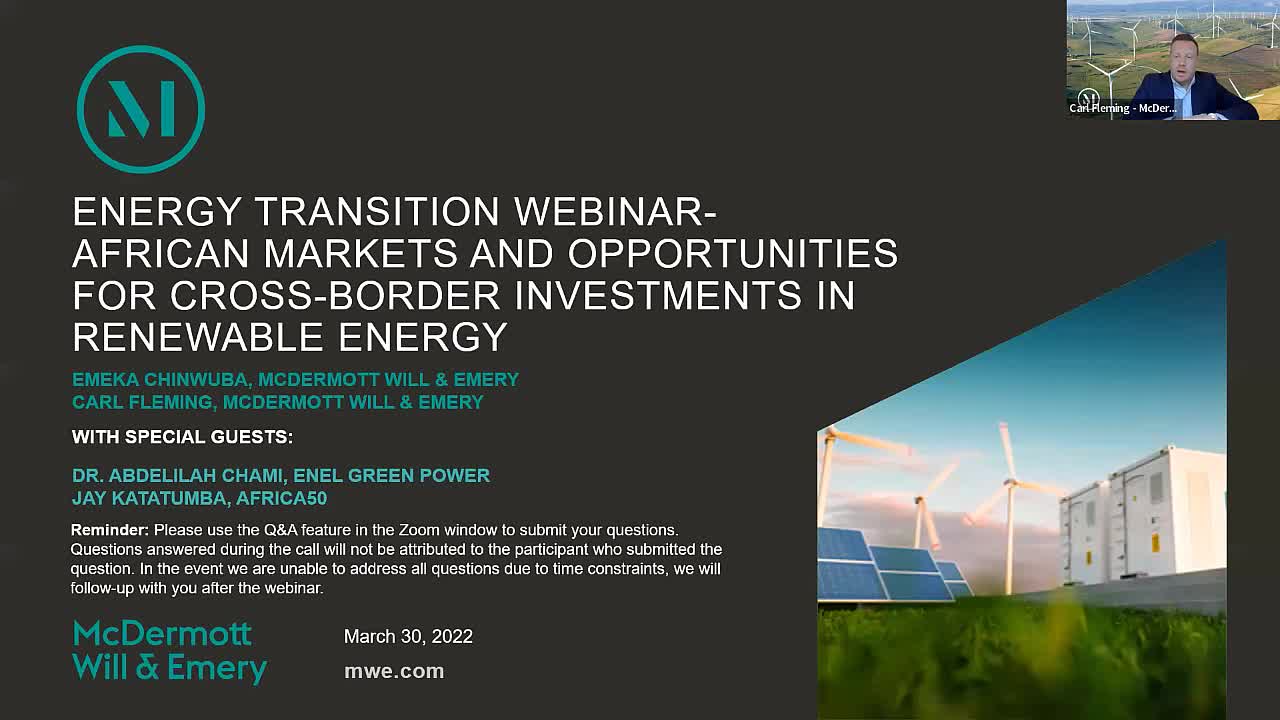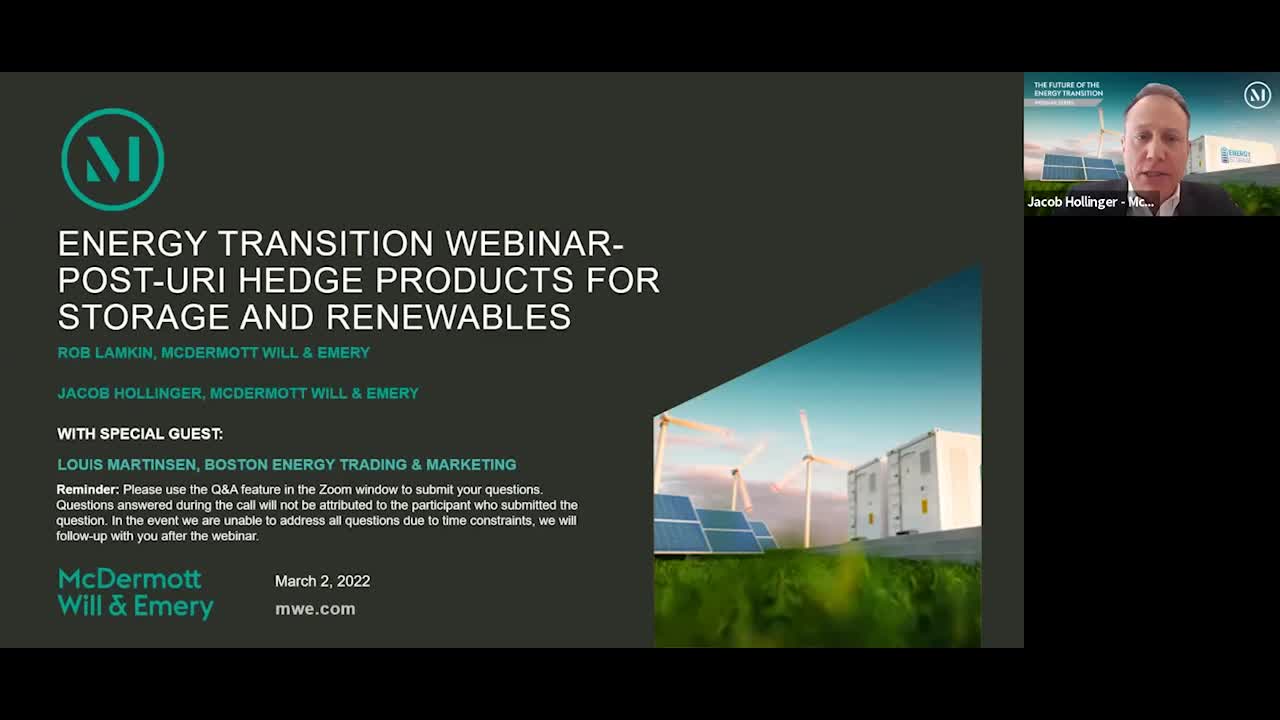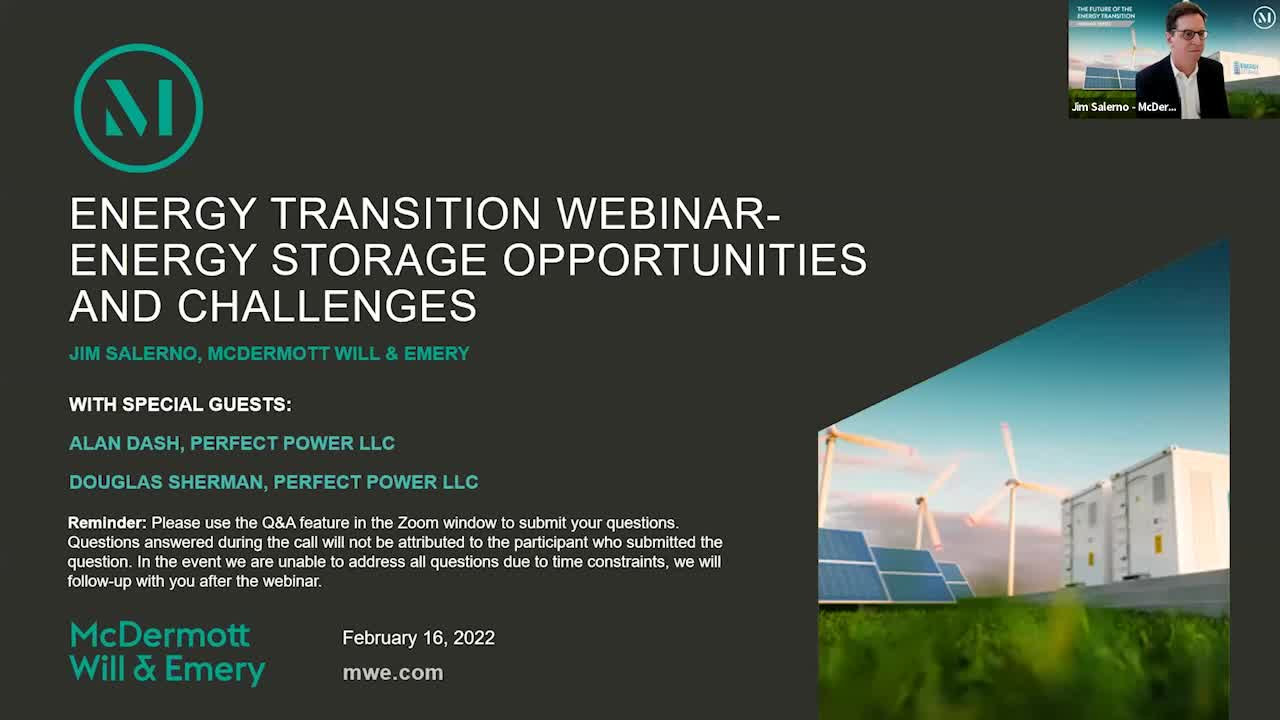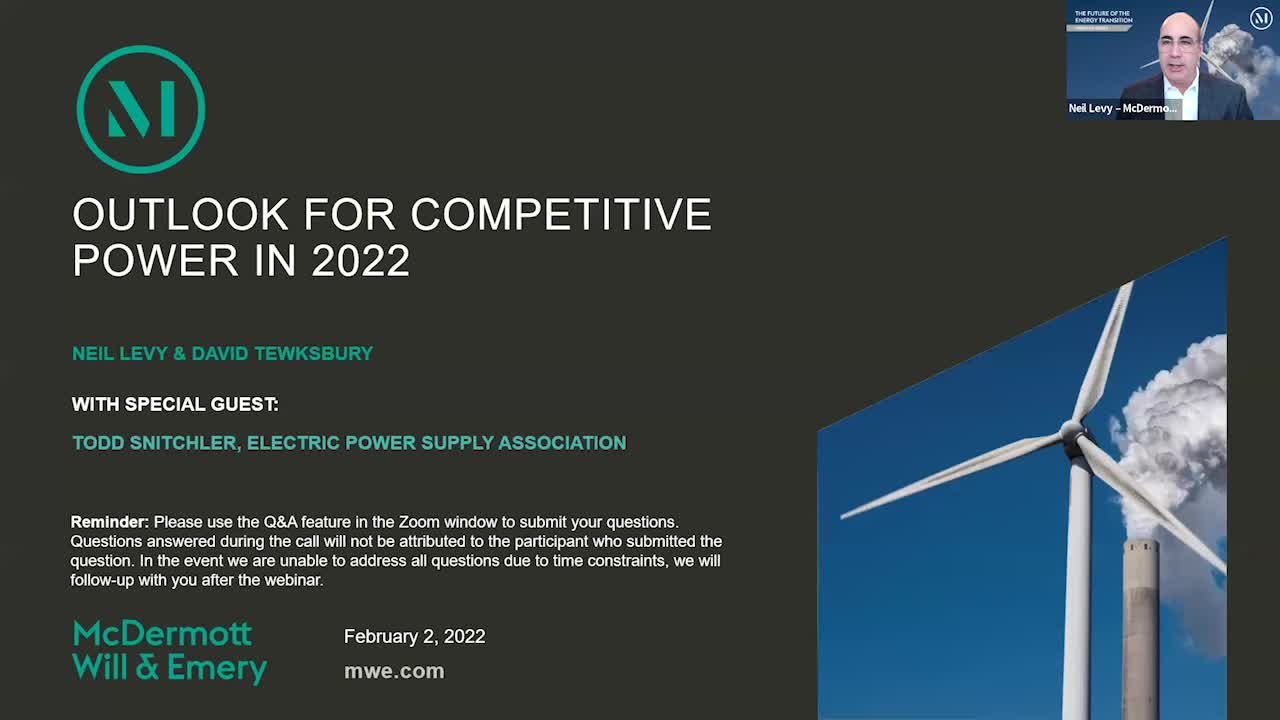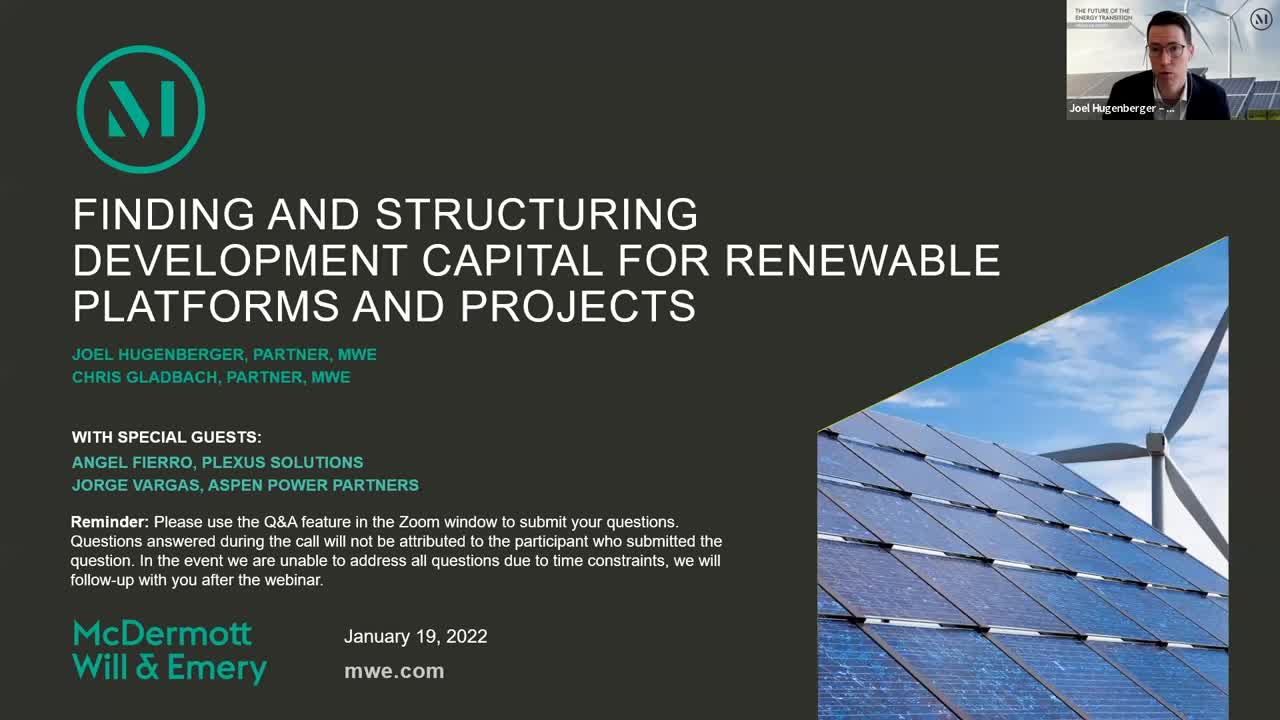The US Department of Commerce (Commerce) recently initiated a circumvention investigation against solar cell and module imports from Cambodia, Malaysia, Thailand and Vietnam. This decision has the potential to profoundly impact the companies that import or rely on imported crystalline silicon photovoltaic cells (CSPs) in the United States. To help companies navigate this investigation, McDermott’s Carl Fleming, Lynn Kamarck and Tyler Kimberly were joined by Brett White, vice president of regulatory affairs for Pine Gate Renewables, for a fireside chat that covered, among other things, the specific issues Commerce will investigate, how to assess the risk of this decision across developer portfolios and the opportunities presented for improving current renewables legislation.
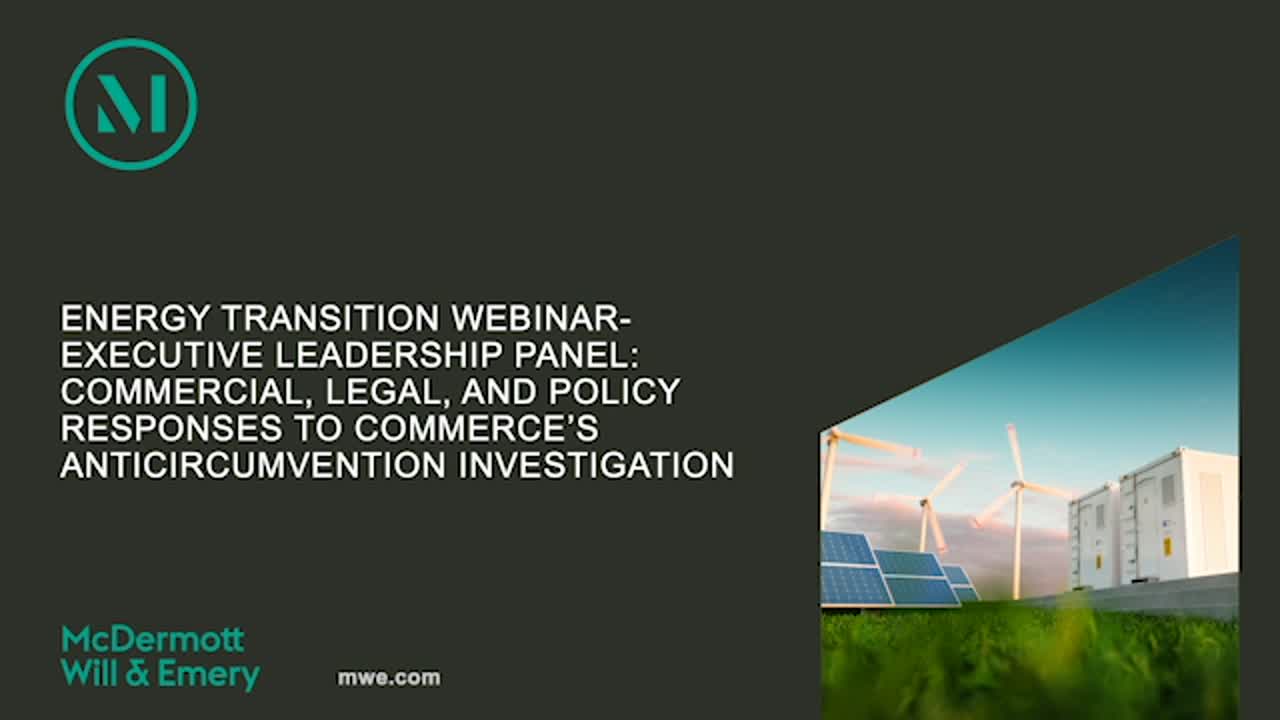
Below are key takeaways from the discussion:
1. Commerce’s decision to initiate a circumvention investigation into whether CSPs imported from Cambodia, Malaysia, Thailand or Vietnam are circumventing antidumping and countervailing duty orders on CSPs from China has generated market uncertainty for companies that import or rely on imported CSPs.
2. Whether any assessment of duties or penalties that result from the investigation will have retroactive effect is currently unclear. Applicable regulations do not require Commerce to apply duties retroactively, providing an opportunity for “interested parties” to offer feedback to Commerce as to why retroactive application would be unfair. (In this context, domestically, importers of record, businesses and trade associations and industrial users are generally recognized as interested parties.)
3. Major legal and factual issues may sway Commerce’s ultimate determination, while certain factual discrepancies in Auxin Solar Inc.’s petition to Commerce may lead to a preliminary decision by Commerce. (The deadline for the preliminary decision is August 29, 2022, and it’s unlikely that Commerce will act before this deadline.) Additionally, certain “country of origin” legal analyses are implicated in any ultimate determination Commerce makes.
4. Auxin’s petition and Commerce’s investigation have given more attention to the issue of importing CSPs and to the Build Back Better Plan (BBB), so there is optimism that this may push US Congress to act more quickly on the adoption of certain tax credits, domestic content credits and other incentives under the BBB.
To access past webinars in the Energy Transition series and to begin receiving Energy updates, including invitations to the webinar series, please click here.
read more

 Subscribe
Subscribe